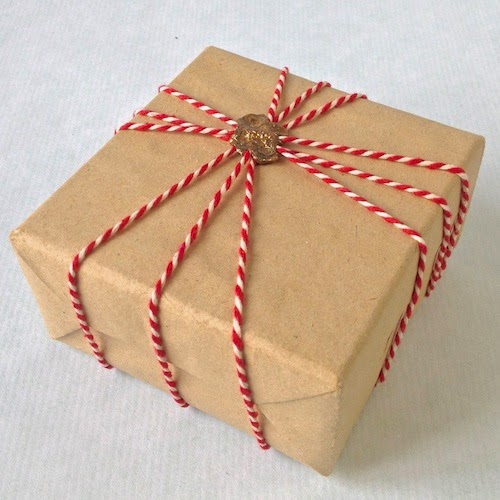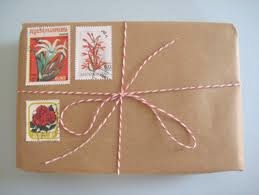CHRISTMAS STATIONARY.
DESIGN DEVELOPMENT.
Today I drew up the illustrations that would go underneath the pieces of type.
the symbols I have to illustrate are:
- The grinches heart growing 3 times the size.
- The polar express bell.
- A mirror
The priorities for each illustration is simplicity and consistency between all 3 cards.
As I aim to screen print the outcome I think that the less detail in each of the illustrations the better the quality and effect of the screen print will be.
I began sketching the illustration of the mirror for the Elf card. I kept the illustration simple, and tried to add a festive touch by adding a simple bow to the top of the mirror.
Next I worked on illustrating the bell which was again very simple, I feel that larger blocks of colour will come out better when screen printing. I followed the same aesthetic appearance for this illustration as i did for the last, taking on board and continuing the geometric hand rendered look.
The last illustration was the simplest of the three showing the Grinches heart growing three times in size. For this illustration I sketched up a few different variations of the same idea, and then chose to use which I think best fit the style of the film and was most consistent with the rest of the illustrations.
Next I moved onto the quotes that would be overlaid ontop of the illustrations. As well as matching well with the aesthetics of the images I had created, I also wanted to make sure that I emphasise the process in which I am aiming to produce the cards, by screen printing. It is because of these two elements that I think it would be best to follow a route of simplicity over something too complex. I also need to figure out how the type element can be manipulated to keep consistency across the card family, as although they are not sold as a set, they need to follow the same theme in aesthetics as they do in their movie references.
I had an inclination of what I wanted to do with the typography. The direction I wanted to proceed in was to have a base font in which most of the text on each card would be set in, and have a secondary more decorative font, relevant to each film, to set the most important parts of the quote in.
I started firstly by finding a base font. I didn’t want something that was made particularly to stand out, but to compliment anything else on the card, such as the illustrations and the more decorative type pieces. Therefore I looked for something sans serif, with rounded edges. The best font that I came across for the role was Days sans black.
I looked firstly at the polar express card, and dissected the quote to determine which parts should be decorative, and which parts should be in the base font. I found that the most important parts of the quote were in two sections ‘real things’ and ‘can’t see’, therefore these are the two sections I want to differentiate from the rest of the quote by changing the font.
I wanted the font, that would separate these parts of the quotes to drawn on aesthetic influence of the film. I looked to font used for the film for inspiration.
However I found that most of the type associated with the polar express was a very thin serif font. I knew this wouldn’t combine aesthetically well with the base font, and always feel that heavier fonts look great in screen printing.
Therefore I looked for another point of inspiration, from the Polar express itself. I felt that a steam train, western inspired font would not only work well with the font already used, but would also nod subtly to the aesthetics and plot of the film.
I searched online to find the best western inspired font that I felt would match well with the current typeface, looking at a selection I found that, the more simpler, less detailed typefaces were the most complementary to the current elements of the design. In fact I decided that the simplest of them all west best to use.
Next I looked at the Grinch themed christmas card and already had a strong idea of what alternative font I wanted to use. The grinch, in which I watched as a theme for this film is originally from Doctor Suess and has a strong aesthetic. I tracked down the original Dr.Suess typeface online and managed to find one that someone had made which looked exactly the same. I tested the combination of the two fonts out by again separating the small parts that stood out the most and sectioning these off with the Dr. Suess inspired typeface. I had guessed this would work well as not only is the typeface again, without much detail, filled in and very simple, it is also very angular much like the illustration in the background.
Finally I moved onto the third card inspired by Elf. Again I separated the quote into sections leaving ‘pretty’ and 'christmas card’ as words I needed to seperate using a different font. At first as the message had a theme of ‘looks’ and ‘pretty’ and prusumingly is a card that would be bought for a girlfriend or a female friend I looked for a script font that would be compatible with the base typeface. I thought that a script font having quite feminine values word work well in combination with the message of the quote, however when put to the test, I couldn’t get the script font to work spatially as the leading was always off as It did not match that of the base font.
I went back to the drawing board and instead of trying to represent the message, I tried to find one that fit the theme of the film, as I had done with the other two card ideas. I started thinking about the character buddy (elf), and some of the main visuals I had collected from the films. One in particular showed Buddy adding maple syrup to his food. Buddy continuously makes references to his sugary diet throughout the film, and so in trying to find a festive font to represent this I came across candy cane. A simple sans serif font highly reliant on circles, with a stripy candy cane appearance. I felt that this font, with its sweet reference would be perfect for the card design.
With the type and illustrations for each card completed, I next began to look at the final aspects, size of each card which would be reliant upon readability of text and illustration and the colour scheme.
I looked back at the screen printed christmas cards I had looked at for colour scheme. I knew that in order for my layers of text and illustration to work, my colour scheme would be two colours plus stock. In terms of festivity, I found that the most common colours used were green, red, white, navy and yellow. I wanted to try and move away from the tradition of red and green and instead subtly reference christmas colours. I thought about screen printing and its organic aesthetic, and thought about the idea of switching the colour of the stock to play along with this. As when working with screen prints you are able to work with white inks, I am able to switch from using a regular white stock. I felt that a brown craft card would not only continue on the organic like aesthetic but also work as a really complementary neutral colour in which other brighter inks can stand out on.
The use of the brown craft card reminded me of the traditional way of wrapping presents in which brown parcel paper is used with red ribbon or red and white string. I felt that this colour combination was both festive but subtle. I also felt that implementing this traditional colour pallet used on old parcels worked perfectly with the use of a more ’traditional’ print process as well.
In terms of separating the two layers of the card (illustration and type) by colour I felt that the text, as the main element of the card should be in the most colourful of the two shades, Therefore I plan to print the illustrations underneath in white and the text over the top in red.
The size of each card varies across the range of three as it is determined by the size of the quote. For example, the Elf card uses the smallest quote and therefore the card can be much smaller than the Grinch one, which uses a much longer quote. I wanted to try and keep readability equal for each of the cards, using similar size type across all three. I also wanted to keep consistency across the lines of cards by giving them similar border sizes round the edges. Therefore the only way to house the longer quotes, is to make the cards larger.
The polar express card is the smallest card measuring W147mm x H159mm.
Followed by the Elf card measuring W147mm x H155mm.
and lastly the grinch measuring W147 x H178mm.
I don’t think that the differentiation in size of the cards is an issue, due to the consistency of other aspects I have implemented to keep the designs relatable to one another and working as a set.
Happy with the design, I created the designs ready to process onto screens for thursday.





























No comments:
Post a Comment